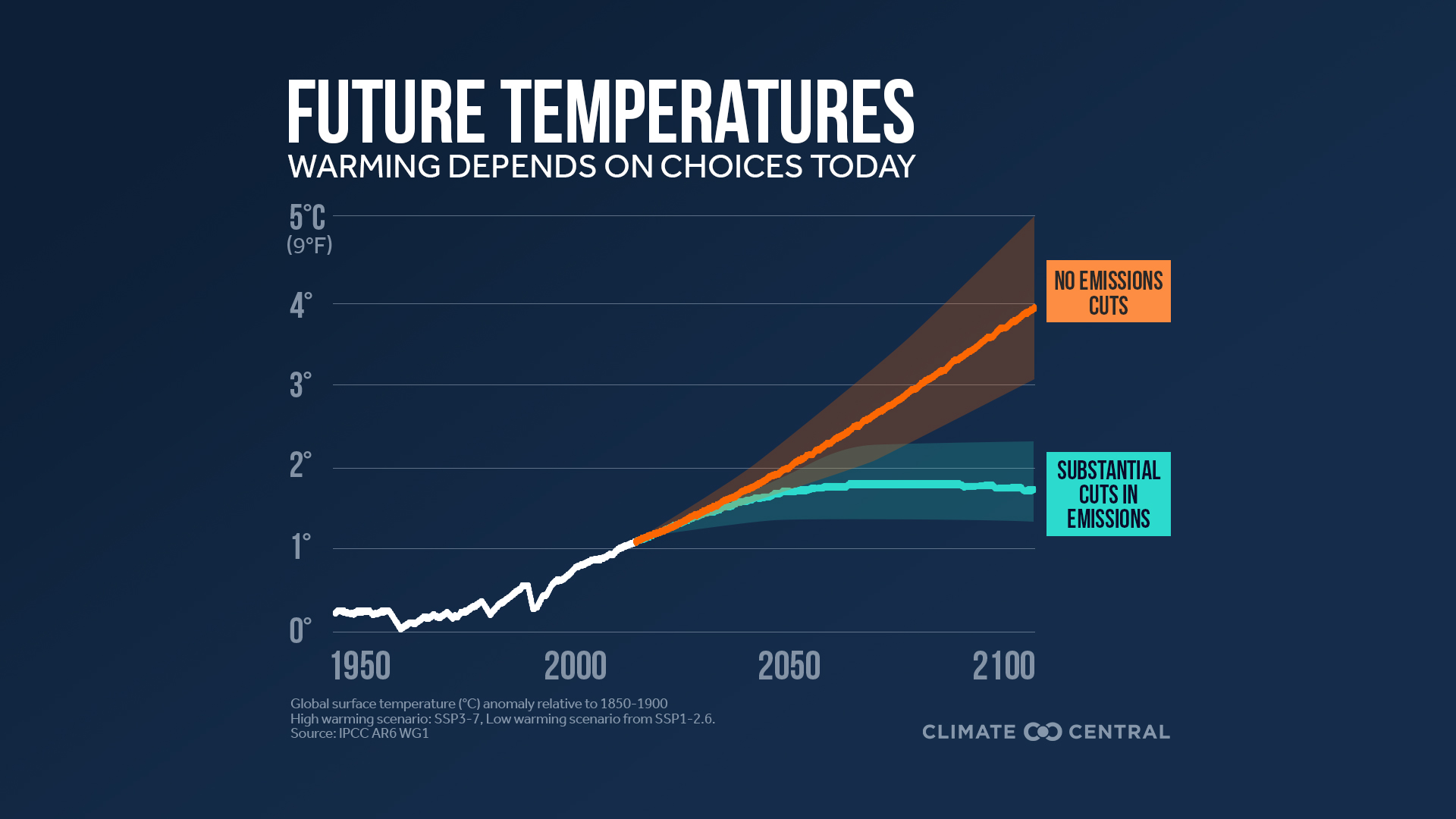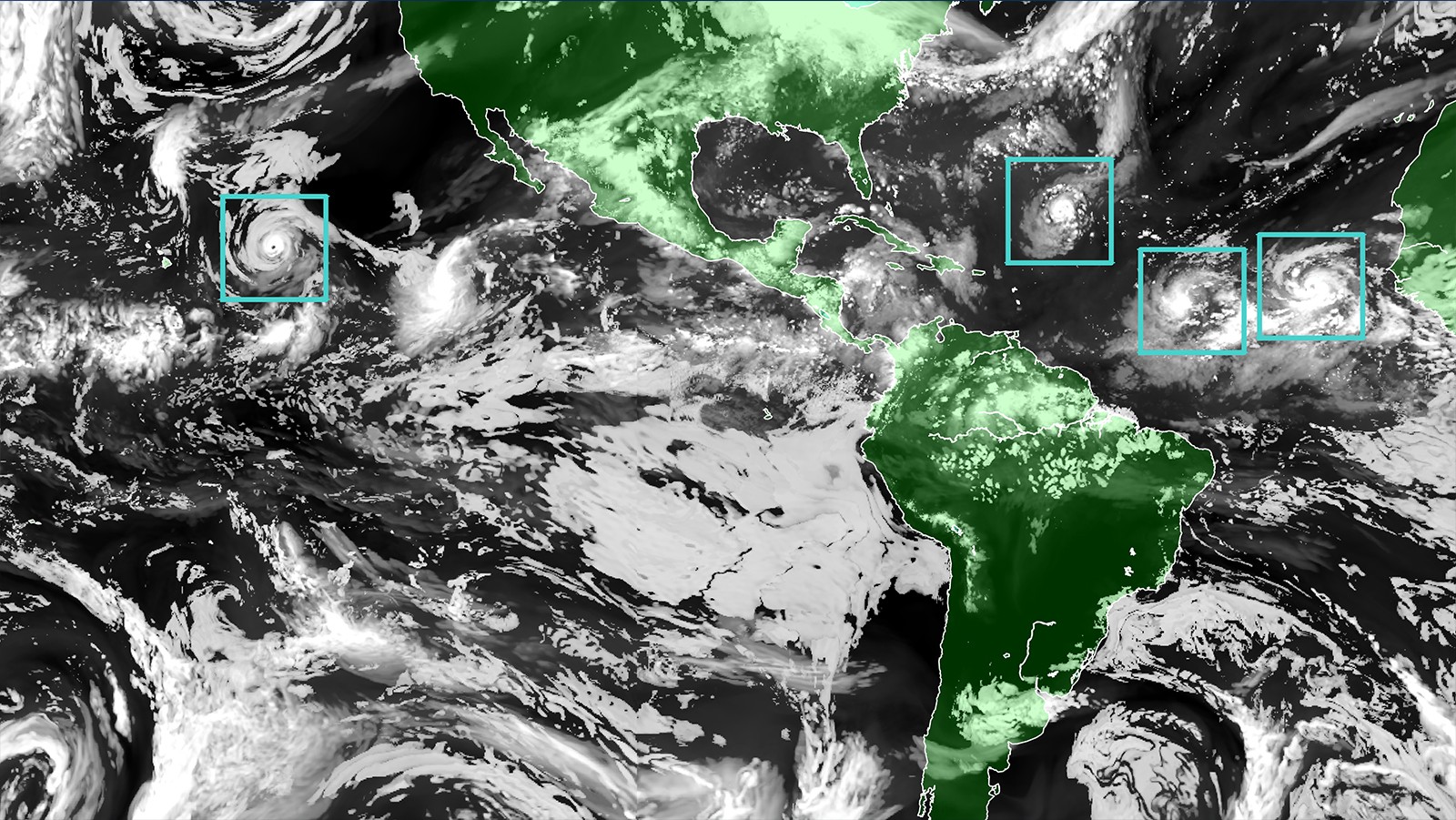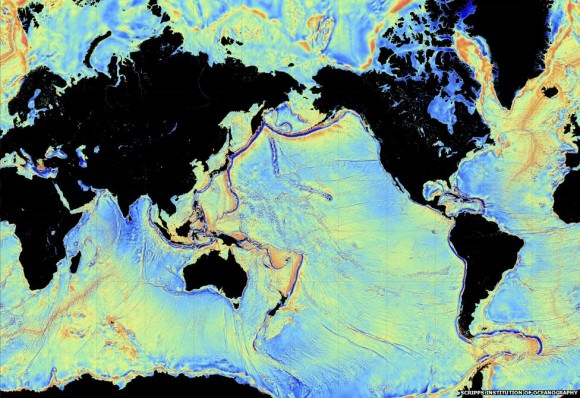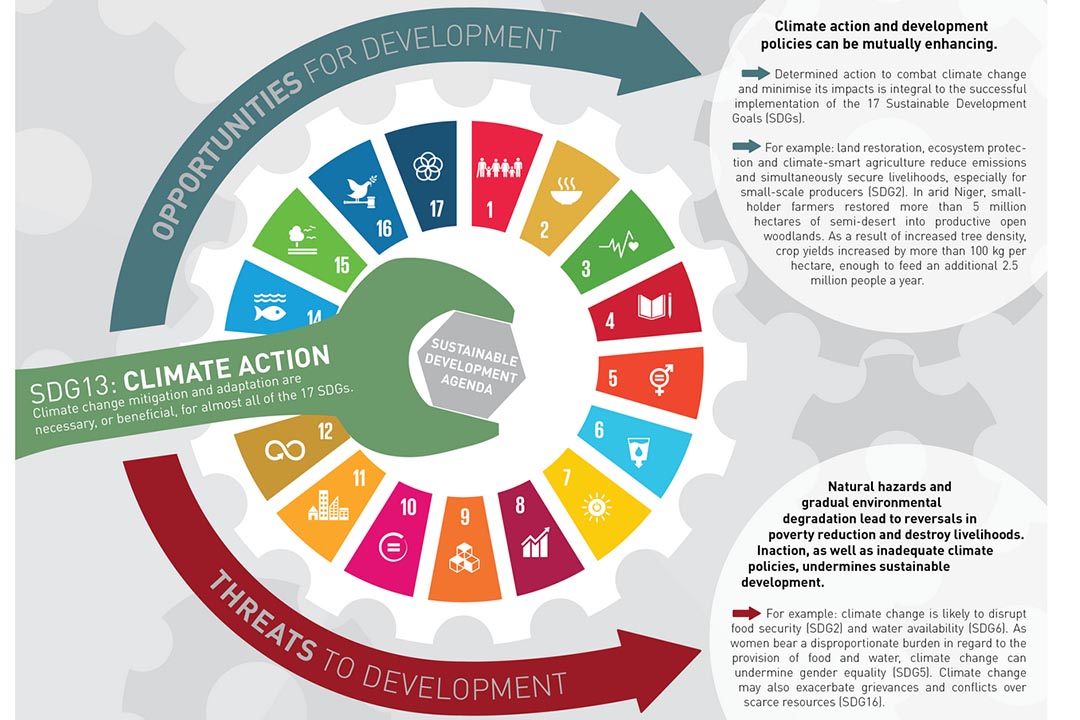The Role of AI in Revolutionizing Climate Solutions
 Utkarsh Jha
Utkarsh Jha
In 2024, the world has already seen a staggering 50% increase in the frequency of extreme weather events compared to just a decade ago. This escalating pattern highlights the urgent need for effective solutions to combat climate change and mitigate its devastating impacts. The rising temperatures, intensified storms, and shifting weather patterns are not only disrupting natural ecosystems but also threatening human livelihoods and economies. As we face these mounting challenges, innovative technologies become critical in our efforts to respond. Among these, artificial intelligence (AI) stands out as a transformative tool with the potential to revolutionize our approach to climate action.
By harnessing AI’s capabilities to analyze complex data, predict environmental changes, and optimize resource management, we can enhance our strategies for both mitigating climate impacts and promoting environmental conservation. This blog explores how AI is reshaping the landscape of climate solutions and conservation efforts, offering new hope in the fight against global environmental crises.
Climate Change Overview
The primary cause of climate change, which is human activity, is posing serious and growing concerns. Global temperatures are rising significantly on the world; the last ten years have been the highest on record. Storms, heat waves, and torrential rains have become more common and powerful as a result of this warming trend. Coastal towns and ecosystems are under risk due to rising sea levels brought on by the melting of polar ice caps and the thermal expansion of seawater. Weather patterns are disturbed by these changes, which has serious repercussions for public health, water resources, and agriculture.

Climate change has wide-ranging and significant effects. The inability of ecosystems to adjust to the quickly changing environment is causing habitat loss and the extinction of species. Natural disasters, shifting agricultural zones, and a surge in pollution and heat-related illnesses pose greater threats to human societies. Damage to infrastructure, lower agricultural yields, and rising health care costs put a burden on resources and growth, which also affects economies.
Need for Climate Modeling and Prediction
To comprehend future climate scenarios and get ready for any effects, climate modeling and prediction are essential. Conventional climate models are built on intricate simulations that are grounded in historical data and physical principles. Despite their effectiveness, these models frequently have drawbacks because of their high computational complexity and the large volumes of data they must handle. By improving these models, artificial intelligence (AI) promises a breakthrough method for producing climate predictions that are more precise and timelier.
The application of artificial intelligence (AI), in particular machine learning (ML) techniques, has revolutionized climate modeling by making data analysis more accurate and effective. Compared to traditional approaches, machine learning algorithms can examine large datasets, find patterns, and make predictions faster. They are skilled at analyzing intricate and nonlinear correlations found in climate data, which aids in the improvement of forecast accuracy and climate model refinement.
By combining information from several sources, including satellite observations, on-the-ground measurements, and climate simulations, artificial intelligence (AI) has the potential to improve the level of detail in climate models. Artificial intelligence (AI) can find subtle patterns and connections that traditional models might miss by using deep learning techniques. More accurate forecasts of climatic variables including temperature, precipitation, and sea level fluctuations are made possible by this capacity.
AI-driven models can also learn from fresh data continuously, which allows for iterative improvements in predictions. With the use of this adaptive learning technique, climate forecasts can be improved in real time, and projections can be modified in light of recent data.
Case Studies on Climate Change and Model Prediction
AI in Hurricane Prediction and Response
In 2024, one of the most compelling examples of AI’s impact on climate prediction is its application in hurricane forecasting and response. The 2024 Atlantic hurricane season has been notably active, with an increased frequency of severe storms impacting various coastal regions. AI has played a crucial role in improving the accuracy and timeliness of hurricane predictions, which is vital for disaster preparedness and mitigation.
A notable case is the collaboration between NOAA’s National Hurricane Center and Google’s AI team, which has led to the development of a state-of-the-art hurricane forecasting model. This AI-driven system leverages machine learning to analyze large datasets from satellites, weather stations, and historical hurricane records. The model uses these data to enhance the accuracy of predictions regarding hurricane formation, intensity, and trajectory.
In this 2024 initiative, the AI system integrates data from multiple sources, including high-resolution satellite imagery and real-time atmospheric data. It applies deep learning algorithms to identify patterns and anomalies associated with hurricane development and progression. The AI model has been trained on decades of historical hurricane data, allowing it to predict storm behavior with unprecedented precision.

One significant advantage of this AI-driven approach is its ability to provide more accurate and timely forecasts, reducing the uncertainty in predicting hurricane paths and intensities. For instance, during Hurricane Dorian’s unexpected rapid intensification in early 2024, the AI model successfully predicted the storm’s strengthening with greater lead time than traditional models. This early warning allowed for more effective evacuation planning and resource allocation, ultimately saving lives and reducing property damage.
Moreover, the AI system contributes to enhancing emergency response efforts by providing detailed, localized predictions about storm impacts, such as potential flooding and wind damage. This information enables local authorities to implement targeted response measures, improving resilience and recovery efforts in affected areas.
The integration of AI into hurricane forecasting represents a significant leap forward in climate prediction, demonstrating how advanced technologies can address complex challenges posed by climate change. By enhancing the precision of weather forecasts and improving response strategies, AI is helping communities better prepare for and mitigate the impacts of severe weather events.
AI in Predicting Marine Heatwaves
In 2024, the collaboration between Scripps Institution of Oceanography and Climate-AI introduced an AI-driven system designed to enhance predictions of marine heatwaves. This system integrates large volumes of data from ocean sensors, satellite observations, and climate models to forecast ocean conditions with high accuracy.
The AI model employs machine learning techniques to analyze historical and real-time ocean data, identifying patterns and trends associated with marine heatwaves. By processing complex datasets, including sea surface temperature anomalies, ocean currents, and atmospheric conditions, the AI system can predict the onset, intensity, and duration of marine heatwaves several weeks to months in advance.

A significant application of this model was during the 2024 Pacific marine heatwave, which affected large areas of the Pacific Ocean. The AI system successfully forecasted the development and progression of the heatwave, providing early warnings that allowed fisheries and coastal communities to prepare. For example, in California, the predictions enabled fishery managers to implement protective measures for vulnerable species and adjust fishing regulations to mitigate the impact on local fish populations.
Additionally, the AI-driven forecasts assisted researchers in monitoring and studying the heatwave’s effects on marine ecosystems. The ability to predict marine heatwaves with high precision also facilitated more effective management of marine protected areas, allowing for targeted conservation efforts to safeguard critical habitats.
AI in Policy Development and Resource Allocation
AI helps in crafting climate policies by analyzing complex data sets to identify trends and predict the outcomes of various policy options. Machine learning algorithms can process historical climate data, current emissions trends, and socio-economic factors to model the potential impacts of different policy measures. For example, AI can simulate the effects of carbon pricing, renewable energy incentives, or regulatory changes on emissions reductions and economic performance. This enables policymakers to evaluate the effectiveness of proposed policies before implementation, ensuring that they are based on robust evidence and are likely to achieve desired outcomes.

AI also enhances strategic planning by optimizing resource allocation for climate mitigation and adaptation projects. For instance, AI-powered tools can analyze geographical data, climate projections, and socio-economic factors to prioritize areas for investment in green infrastructure, disaster resilience, and conservation efforts. By identifying high-impact areas and potential vulnerabilities, AI helps in directing resources where they are most needed, improving the efficiency and effectiveness of climate initiatives.
Moreover, AI assists in monitoring and evaluating the progress of climate policies. Real-time data analytics enable governments and organizations to track the implementation of climate measures, assess their effectiveness, and make adjustments as needed. For example, AI can analyze satellite imagery to monitor deforestation rates, assess air quality improvements, or track the expansion of renewable energy infrastructure. This continuous feedback loop supports adaptive management and ensures that climate policies remain responsive to evolving conditions.
Future Potential
The future potential of AI in climate policy and international agreements is vast. As AI technology advances, its influence on policymaking is expected to grow significantly. AI will enhance predictive analytics, offering more accurate forecasts of climate impacts and policy outcomes. This will enable policymakers to craft more precise and effective strategies and negotiate international climate agreements with a clearer understanding of their global implications.
AI is likely to play a crucial role in international climate negotiations by analyzing data from various countries to identify shared goals and areas of divergence. This capability will support more equitable and science-based negotiations, helping to align national contributions with global climate targets.
Furthermore, AI's future applications will include sophisticated scenario analysis, allowing policymakers to explore multiple policy pathways and their potential outcomes. This will facilitate the development of flexible and resilient climate strategies that can adapt to changing conditions.
In addition, AI will enhance public engagement and education by making complex climate information more accessible. Personalized AI-driven platforms could help individuals understand how climate policies affect their communities, fostering greater public support and involvement.
Overall, AI’s integration into climate policy and planning promises to drive more informed, adaptive, and impactful climate action, advancing progress toward a sustainable and resilient future.
Getting Involved and Taking Initiative
Volunteer for Environmental Organizations
Many environmental organizations leverage AI to enhance their initiatives. Volunteering with these groups can provide support for projects that use AI to monitor deforestation, track wildlife, or predict climate events. Look for opportunities with organizations like the World Wildlife Fund or local environmental nonprofits that are involved in tech-driven conservation efforts.
Advocate for AI in Climate Action
Raise awareness about the role of AI in addressing climate change through social media, blogs, or community events. Advocate for the integration of AI solutions in local and national climate policies. Supporting and promoting AI innovations can help push for greater adoption and funding for these technologies.
Engage with AI Education and Training
Educate yourself about AI and its applications in environmental science. Online courses, webinars, and workshops can provide valuable insights into how AI works and how it can be applied to climate issues. Being knowledgeable about these tools allows you to participate more effectively in discussions and advocate for their use.

Integrate AI Solutions: Assess how AI can be incorporated into your existing sustainability initiatives. This might include using AI for energy management, optimizing resource use, or improving waste management. Collaborate with tech firms or academic institutions specializing in AI to develop tailored solutions that address your specific needs.
Support AI Research and Development: Invest in or partner with research projects focused on AI for climate solutions. Contributing to AI research helps drive innovation and supports the development of new tools that can enhance environmental sustainability. Consider funding or collaborating on projects that aim to improve predictive models, data analysis, or climate monitoring.
Promote AI Awareness and Adoption: Advocate for the adoption of AI technologies within your industry. Share success stories and case studies of how AI has positively impacted environmental outcomes. Encourage other organizations to explore AI solutions and consider forming alliances to tackle larger climate challenges collaboratively.
Final Thoughts
In this blog, we’ve explored how artificial intelligence (AI) is transforming climate science. From enhancing climate modeling and prediction to optimizing policy development and resource allocation, AI offers innovative solutions to some of the most pressing environmental challenges. We’ve seen how AI’s ability to analyze complex datasets and provide accurate forecasts is crucial for effective climate action and strategic planning.
For individuals, getting involved through volunteering, advocacy, and education can support AI-driven environmental initiatives. Organizations, on the other hand, can integrate AI solutions into their sustainability efforts, invest in research, and promote the adoption of AI technologies.
As we look to the future, AI holds immense potential to revolutionize our approach to climate change and conservation. How might emerging AI technologies further reshape our strategies for environmental stewardship? The ongoing evolution of AI presents exciting opportunities to enhance our response to climate challenges and drive meaningful progress toward a sustainable future. Let’s stay engaged and proactive, embracing AI’s potential to create innovative solutions for our planet’s most critical issues.
Thank you for your time, and I look forward to sharing more insights with you soon.
Warm Regards,
Utkarsh Jha, Code Target
Subscribe to my newsletter
Read articles from Utkarsh Jha directly inside your inbox. Subscribe to the newsletter, and don't miss out.
Written by

Utkarsh Jha
Utkarsh Jha
Hey there! I'm Utkarsh, a passionate BTech Computer Science student specializing in AI and Data Science. As a versatile writer, my blog is your go-to space for in-depth insights into AI, LLMs, and cutting-edge technologies, as well as trends in finance, global markets, and geopolitics. Join me as I explore the latest innovations, share practical tips, and analyze the forces shaping our world. My goal is to demystify complex concepts and empower you to stay ahead in the fast-evolving landscape of technology and beyond. Let’s embark on this knowledge journey together and shape the future!